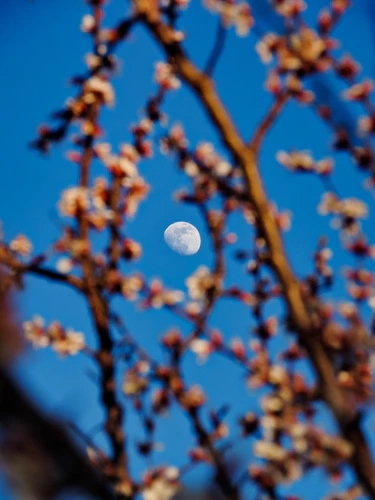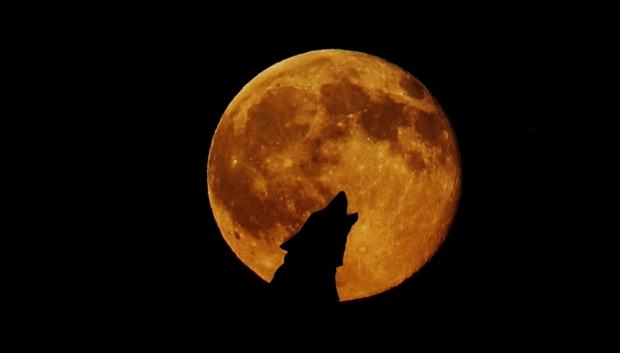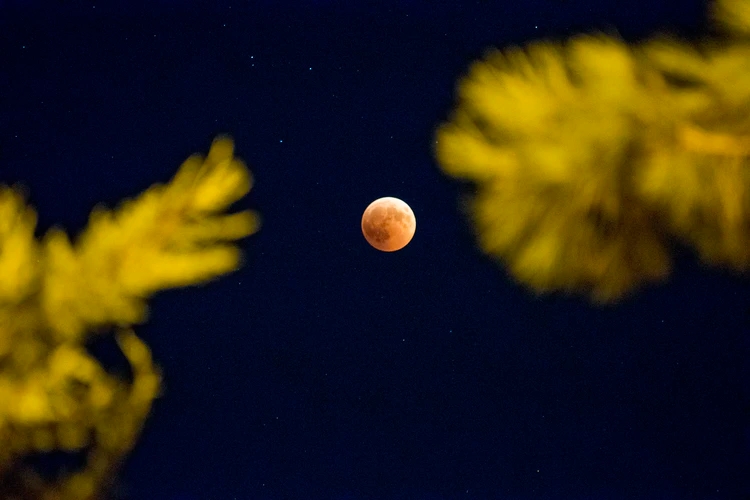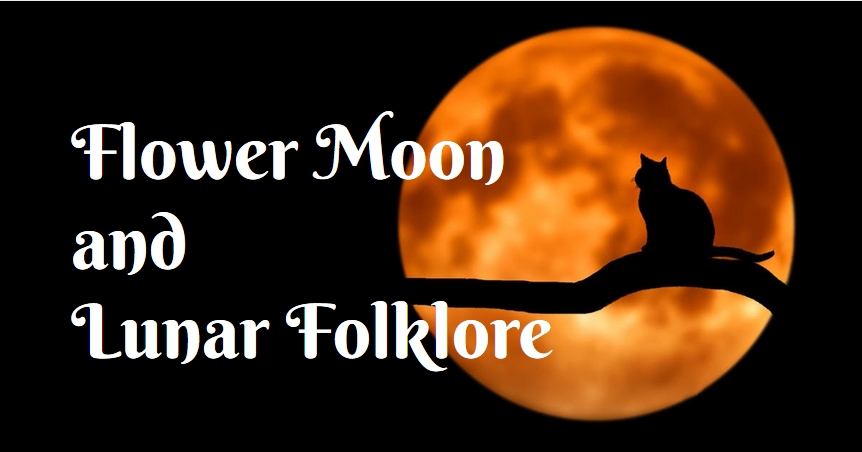According to lunar folklore, the full moon of May is the Flower Moon. Between the evening of August 11 2022 and the morning of August 12 we can see the last supermoon of 2022. The next one will rise in August 2023. The side of the moon that faces Earth will be fully illuminated by the sun, because the moon arrives at a position opposite the Sun. This allows the Sun’s light to fully fall on the area of the moon facing our planet. A Full Moon is six times as bright as the Half Moon.
The Story of How the Moon Came to Be
There was once a beautiful maiden and she was the Sun’s sister. Her name was Ioana Samziana. She had long, silky hair and so blond that it was almost white. She was tall and gracious and she had a beautiful, alabaster, round face. The Sun loved his sister so much, a bit too much some say. So he turned himself into a human and came to ask her to marry him.
But as he changed, he lost all memory of who he really was. He only remembered his love for this Maiden. He searched for the woman he loved, and traveled for nine years, along nine roads. Until he found her. Samziana liked the human, but something in her heart told her she should not marry him. So she ran away. Alas, he followed her, traveling through Heavens and through Hell, until he found her again.
Eventually, she gave in and agreed to marry him but asked he build her a bridge of copper, over a sea of black , for she knew of a monastery on the other side. Where they could marry.
Once on the bridge, the girl threw herself into the sea. She became the foam of the waves and, as the saints scoop it in their hands, Samziana turned into the Moon. And this is how the Moon came to be.
And the human became the Sun again. And they never saw each other again.
No wonder the moon has been personified as a deity, think of Greek goddesses Artemis, Selene, and Egyptian god Thoth.

Flower Moon, Lunar Folklore and Superstitions
It is said that if you’re been born during a full moon you won’t know any shortages all your life.
A church service aimed at good health is much more effective during a full moon.
Of course, spells benefit from the full moon, its light and energy amplifying their powers.
For good luck for the rest of your life, fill a green bowl with water and leave it outside under the full moon. Next day, use the water to wash yourself and no harm will come to you, ever – is the folk belief.
If you wish to fall pregnant, stand under the light of the full moon for as long as you can and your wish will come true. Some folk believe that the fifth day after a full moon is the perfect time to try to conceive a child.
But the new moon is also a symbol of new beginnings, marking the ideal time for making new plans.
In Romanian folklore, New Moon is called Crai Now, New Prince. The night with a full moon is ideal for maidens to dream of their new beau. Step outside inti the light of the new moon, cross yourself three times and say
“New Moon, New Moon, let me drink the morning dew,
New Prince, New Prince, may I dream my one true love.”
Of course, wishes do come true under the new moon. Write your wish on a paper, burn it and throw the ashes towards the new moon. Your wish will come true.

A British legend says that if Christmas falls on the day of a dark Moon, the following year’s harvest will be rich.
In some parts of the British Isles it is believed that a waxing moon on Christmas meant a good crop the next fall, but a waning moon was a warning, indicated a bad one would come.
A lunar halo in folk belief meant that rain, snow, or other foul atmospheric conditions were on their way.
In some Chinese religions, offerings are made to the ancestors on the night of a full moon.
The moon has fascinated people since ancient times. Not only because of its beauty but also because of its influence on life on Earth.
Things you should not attempt during a New Moon:
Don’t move.
Don’t sit the hen on eggs.
Don’t get married.
Don’t go in trip after midnight.

The New Moon an the Lunatics
Some 2 000 years ago, the Roman naturalist and philosopher Pliny the Elder claimed that the full moon affects the moisture in the brain and therefore all human emotions. Then, in the 17th and 18th centuries, despite the fact that the Renaissance era moved away from superstitions, doctors such as Richard Mead and James Gibbs argued that certain periods of the solar and lunar cycles induce certain conditions, such as epilepsy and hysteria.
Did you know that the term “lunatic” derives from the Latin word “moon”?
Today, scientists are still debating on the full moon’s influence on the human psyche. Those who state that crime is on increase during full moon nights are reminded that street lights have been around for more than a century. Nevertheless, animals seem to exhibit a different behaviors during the full moon and this aspect cannot be ignored.
Ancient Month Names for the Full Moon

January’s full moon is nicknamed Wolf Moon, after the howling wolves. Other names are Moon After Yule, Old Moon, Ice Moon.
February’s full moon is also called Snow Moon, easy to imagine why especially if you grew on or above the 45th parallel north.
March has the Worm Moon because of the earthworms that come out at the end of winter. Is is also known as the Crow Moon, Crust Moon, Sap Moon, Sugar Moon, Chaste Moon, or Lenten Moon.

April’s Pink Moon name comes from from the pink flowers – phlox – that bloom in early spring. Other names are Sprouting Grass Moon, Fish Moon, Hare Moon, Egg Moon, and also Paschal Moon because it is used to calculate the date for Easter (falling on the first Sunday after the March Full Moon – as long as the March equinox and Paschal Full Moon coincide).
The May Full Moon is known as Flower Moon, symbolizing the flowers that bloom during this month. Other names are Corn Planting Moon or Milk Moon.
June’s Full Moon is called Strawberry Moon. How sweet! Other names are Hot Moon, Mead Moon, and Rose Moon.
July’s Full Moon is called Buck Moon, after the new antlers that emerge on deer buck’s foreheads around this time. It is also known as Thunder Moon, Wort Moon, and Hay Moon.
In August, the Full Moon is called Sturgeon Moon because of the large number of fish in the lakes where the Algonquin tribes fished, in North America. Other names are Green Corn Moon, Barley Moon, Fruit Moon, and Grain Moon
September‘s Full Moon is Harvest Moon. Most years it is in September, but every three years September borrows its full moon to October. Other names for September’s Full Moon are are Corn Moon or Barley Moon. October’s Full Moon is also called Hunter’s Moon, Dying Grass Moon, Blood Moon (not the total Lunar Eclipse) or Sanguine Moon.
When is the Next Supermoon?
Between the evening of August 11 2022 and the morning of August 12 we can see the last supermoon of 2022. The next one will rise in August 2023.
Full moon on Hallowe’en 2020
October 2020 will have a full moon right on Hallowe’en, Saturday October 31st! This year’s Halloween full moon is also called Blue Moon, being the second full moon during the same calendar month. The last time a full moon lit up the sky on Halloween night was back in 2001.
Is a full moon on Hallowe’en a rare event?
Pretty much so. A full moon on Hallowe’en comes by as often as once in a blue moon. Since moon cycles are about 29.5 days and Halloween always falls on October 31st, a Halloween full moon will always be the second full moon during that month, hence called a blue moon.
Between 1900 and 2100 only nine full moons will grace the night of Hallowe’en, with the next full moon on such an event to fall on October 31st 2039.
November’s Full Moon is nicknamed Beaver Moon, since beavers become active preparing for winter. It is also known as Frosty Moon, or Oak Moon. When the Beaver Moon is the last Full Moon before the winter solstice, it is also called the Mourning Moon.
Lastly, December’s Full Moon is called the Cold Moon, or the Moon Before Yule, or the Wolf Moon (more common used for the January’s Full Moon).

The Difference between Full Moon, Supermoon, Dark Moon and New Moon
Full moon refers to the moment when the moon’s Earth-facing side is fully illuminated by sunlight. Supermoon is the same, but the moon must be the closest to Earth.
A Dark Moon happens when the moon is between the Earth and the Sun (in conjunction with is the term) and it appears dark to us. But astrologers call this a new moon because it marks the beginning of a new moon cycle. You will not find a dark moon in the moon phase calendars.
But the Pagan’s New Moon, the one that counts for moon followers, is when the moon begins to show the tiniest illumination, its waxing, and it happens after the dark moon (that we cannot see).
A new moon refers to the moment when the moon’s Earth-facing side is fully in shadow. (Unfortunately, that means the Black Moon will be more or less invisible, even if the moon is high in the sky).



The Moonbow
A moonbow is just like a rainbow, but appearing at night. It involves the way the light refracts. A moonbow will only be seen in the part of the sky opposite of where the moon is visible.
Next supermoom (90% closeness to Earth) will be visible in April 2021 only.
Nevertheless, the full moon carries, apart from its own visible halo, an invisible one of mystery and magic, tied to the ebbs and flows of the tide, as well as the human body, and our intuition. Whether we want it or not, the moon will probably light our footsteps for many more cycles to come.

Remember to check out my books on Amazon.


❤️❤️❤️
This was a fascinating post and an enjoyable read! Can’t believe I missed it!
Thank you so much 🙂
Do not despair 🙂
Although e can enjoy the next super-moon only in April 2021, you can enjoy June’s Strawberry Moon, la Lune de Fraise, on 5 June at 21:12 Paris, Île-de-France time 🙂
Voila!
Haha thank you. I saw the moon but missed your writing when you first posted it 😉